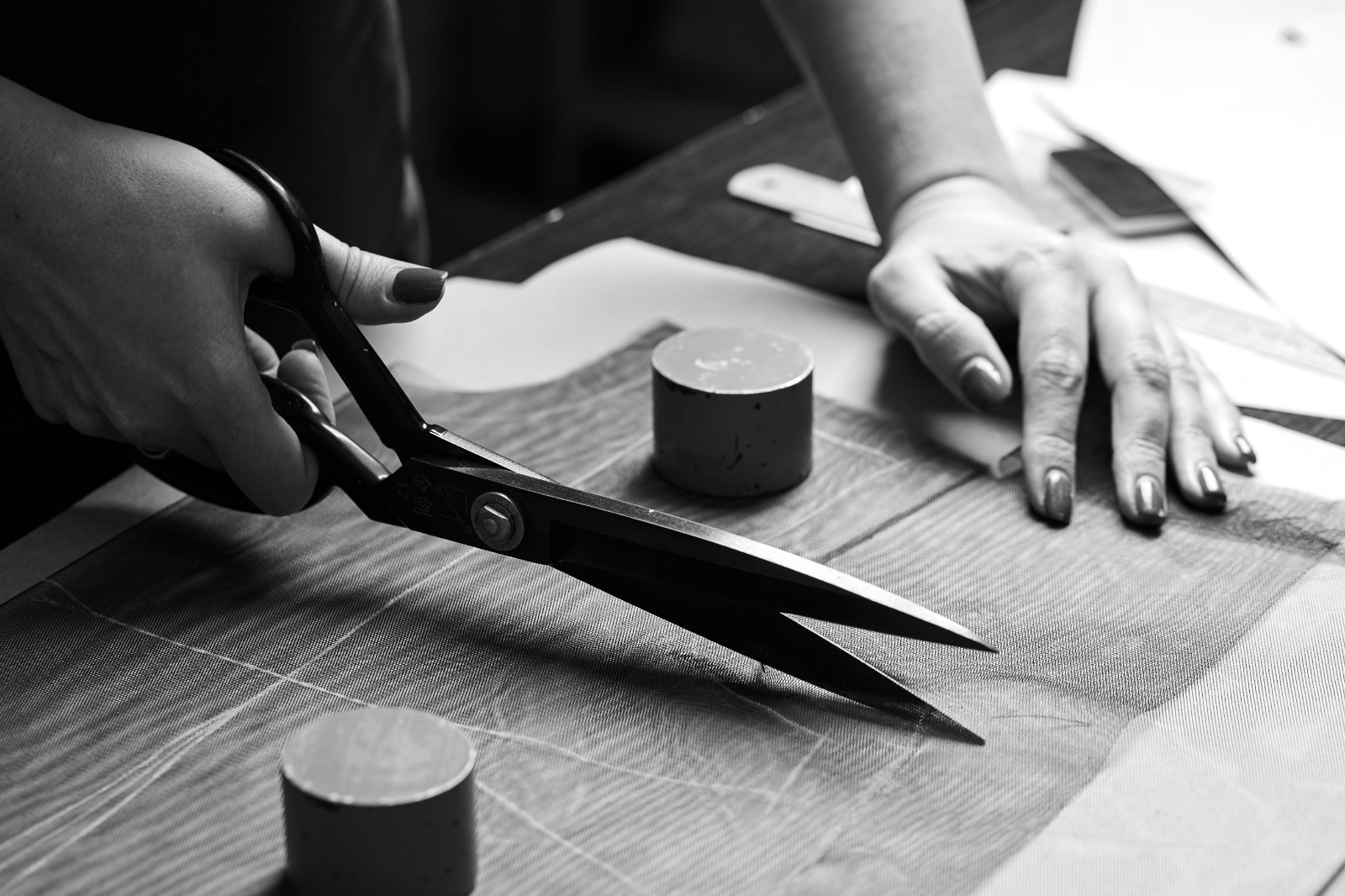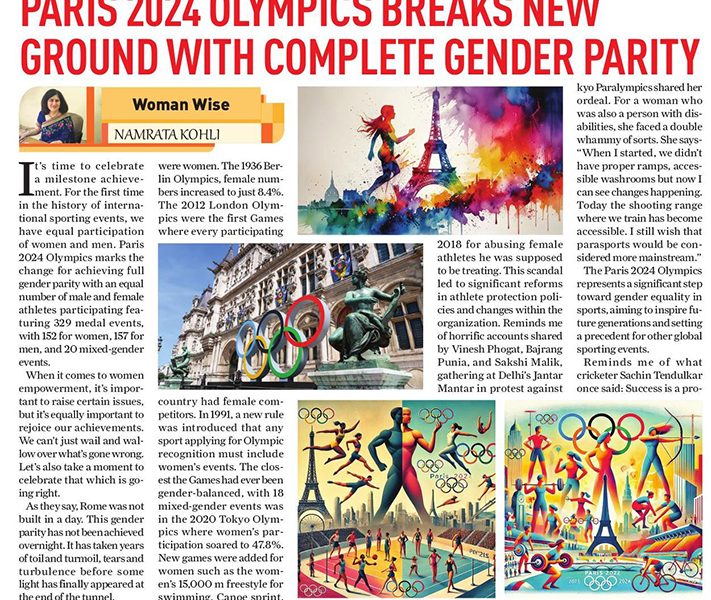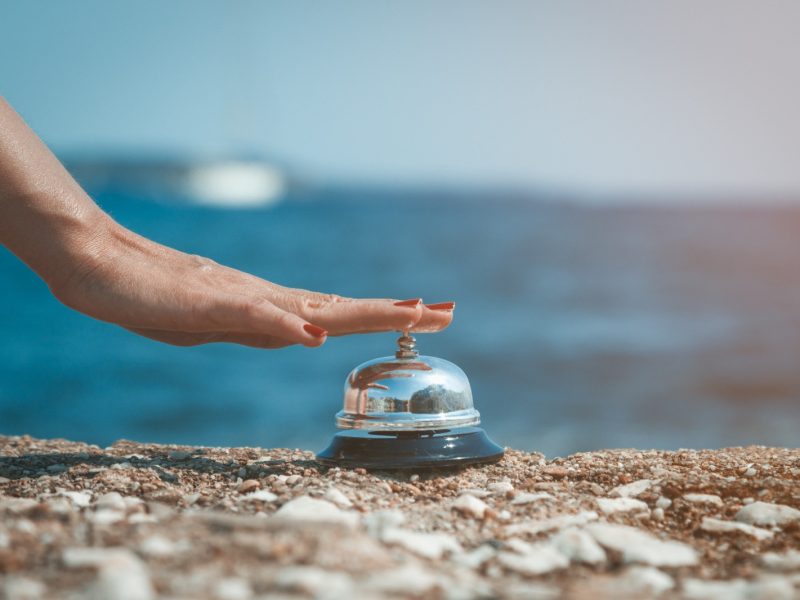There are two ways to buy clothes- one is readymade, and the other is bespoke, or tailor made. In the latter there are regular to premium tailors to designers, depending upon your budget, taste and preferences.
Italian designer Giorgio Armani once said that- “Tailoring is not just about fitting clothes; it’s about fitting personalities.” If you want to look good, then you need to wear a perfect fitting outfit. Wearing something too loose or too tight can hamper your style and hinder your comfort.
Bespoke tailoring is one of the best investments that an individual can make. According to Amritha Ram, Creative Director of KH House of Khaddar (actor Kamal Haasan’s sustainable fashion label that promotes khadi), “You might choose the most expensive and exclusive fabric but if it is not sewn well and doesn’t fit your body right, then it is not going to work for you at all. Instead, the simplest of fabrics if tailored well can make you look and feel good. It does not mean that you’ll have to pay an exorbitant amount to get it done, but there is always a price, and it is always worth going that extra mile to get it custom fit.”
Custom-made clothing allows you to wear clothes specially made for your body shape and size. You know how disheartening it is to know that your size is not available, after falling absolutely in love with a certain garment. Thus comes the concept of bespoke tailoring or getting a designer on board where you customize everything from the colour to the design of your collar, to the shape of your cuffs, the fitting of your top etc.
According to designer Rahul Mishra, “Bespoke is nothing else but something that’s just created for you. For example, when you buy fast fashion, millions of clothes are created of the same kind. The artisans don’t work on that, rather it’s the operators who work on it and most of the systems in readymade garments are automated and machines are making it. Like machines are creating a cup, machines are creating a collar and multiple operators are working on those machines. On other hand, when you think of bespoke, one particular fabric is taken just for you, and dyed for you, hand embroidered as per your requirements. It is the way you want it. And at the same time, it will have its own inherent variations. No two pieces will be the same. It’s almost like when you’re signing on a piece of paper, nobody in the world can ever match their same signature again.”
How to Custom Fit
What are the garments for which men and women almost always prefer a bespoke fitting? Some of the top categories where women are seen using bespoke fitting services include salwar sets, blouses, dresses, evening gowns and lehngas. Men usually do it for blazers, shirts, suits and tuxedos.
There are many ways to get your outfits customized. One is to get regular tailor or Master ji, whom you can find through survey in neighbourhood or word of mouth references from friends and neighbours. This tailor is mostly self-taught, and usually comes from a family of generations of karigars. He usually takes your measurements making notes of what you want and tries to stick to the brief and get your clothes ready, accordingly. But as you go up the value chain, bespoke designers are in a position to advice you on what looks best on you. So just in case you like a particular thing, but that might not work for your body type, the designer would know how to tweak it for you in a way that works for you.
The second option is to subscribe to tech driven bespoke tailoring startups in India which combine traditional craftsmanship with cutting-edge technology to offer personalized, made-to-measure garments often picked and delivered at the customer doorstep. This is the category in between Master ji and a designer. Take the case of Mumbai based Herringbone and Sui, known for their contemporary and stylish bespoke menswear. They offer personalized services for suits, jackets, and formalwear, with a focus on modern cuts and designs. Bengaluru based TailorMan specializes in bespoke tailoring for men, with a focus on classic and timeless designs. Delhi based Darzi Group offers personalized services for both men and women. According to a spokesperson from YourTailor, premium tailoring service provider operational in Bengaluru, Hyderabad and Chennai, “It is a proven fact that clothes made from custom tailoring last four times as much longer as industry machine-made clothes. Due to the precision in fabric, quality of handiwork and the care that goes into making every piece of clothing, you get more value for your buck and your clothes last much longer.”
Then you have retailers who offer bespoke tailoring services such as Study by Janak, Bombay Shirt Company, or the Raymond “Made to Measure” who create bespoke suits and formalwear for men. According to a spokesperson at Mohan Lal & Sons in Dwarka’s Pacific mall D21, “If you come to us for bespoke tailoring, you need not rely only on your inspiration or what you have in mind. No. We too have our catalogue of fashion designs, of swatches, in our fabric folder and can suggest many options. So, the first step would be choosing from the many options. Then our Master ji takes your body measurements, in a span of 7-10 days your piece is stitched, you are called for trials and if some alterations are required, those adjustments are made, and the final piece is kept ready.”
Raymond is known for its stitching, and for its fabric. Says a spokesperson from Raymond outlet in Central Delhi, “A shirt has counts, while pant fabric has grade. So as per the count and grade of the fabric, the cost is decided. The minimum price range for a pant shirt is Rs 3,000-4,000 and if the fabric is expensive, then just a pant may cost Rs 12,000. You can get a two-piece men’s suit stitched for Rs 15,000-25,000 and there are HNIs investing till even Rs 9 lakhs.” He adds that the challenge for the customer is that he doesn’t know what looks best on his body what with a range of fittings available in readymade segment such as slim fit, super slim fit, smart fit etc or shape of trousers from narrow, straight to broad fit… because these fits are so specific, they don’t look good on every body type.
The last and the most expensive option is to engage a fashion designer who are often big names in the fashion industry and have a fairly medium to large-sized team of tailors. Often for big events such as weddings, people prefer to engage a designer who can create traditional dresses based on the current trends and personal style. Take the case of Neeta Lulla, who is known for creating exclusive bridal lehengas. Says Neeta- “The end user generally looks for something that is true to her persona and one-of-a-kind; that can be part of her precious possession (and that is the essence of true couture). Our purpose is to make the bride feel her most beautiful and confident through the comfort and fit of her ensemble. A designer garment is the end result of the cumulative process of design research, use of premium fabrics, diversity of cuts, impeccable finish and a fit that makes it special. We believe in enhancing a bride’s identity through this garment which should be stylish, elegant and innovative.”
Usually, a designer’s team comprises expert tailors for cutting, stitching, embroidery, and embellishments etc. Says Amritha Ram, “The Cutting Master is key to everything. He’s the one who understands the pattern and puts together vision of a designer, and sometimes this is the person who brings out the unseen cut or silhouette to life. As designers, we do our sketches, we try to say we need asymmetry, and we need it to fit like this on the shoulders, fit like this on the waist but this is the person that understands and brings everything together. The most sought after are also the embroidery people after the Cutting Masters.”
If you are engaging a designer, be prepared for at least three separate visits before taking delivery of the hand-crafted masterpiece. Says Amritha Ram, “The first step is to have a chat with the designer in order to explain your needs and personal expectations. The next step is to select the style; one or two-button front, single or double breasted, the number of buttons on the cuff, the width and style of lapel; there are certain subtleties. This is where bespoke makes all the difference as there is no limit to what we can do for you.”
Next is the rough baste fitting. The basted suit is a blueprint or ‘first draft’ of the final version and can be radically altered if necessary. The final stage allows for lapel facings to be added etc before the garment goes to the finisher where the lining will be filled-in and the buttonholes finished off.
Finally, be it bespoke tailoring or ready-made clothes, prices may be similar or bespoke may sometimes cost much more. Also bespoke takes extra time, apart from money. On the upside, it is made to specific needs and wants of an individual and it is often said that those who find a good tailor, rarely switch back to readymade clothing. Like American fashion designer Ralph Lauren said- “A needle and thread in the right hands can weave the fabric of dreams.”
PRICE CHART
Going for tailor made instead of readymade? You can opt for a normal darzi, go for a premium one if your pocket allows. But if budget is no constraint and you are keen on investing in a garment as heirloom, then engage a designer
The table below illustrates the ballpark cost of getting a garment custom made from a regular tailor, a premium one and a designer
| Regular Tailor (Rs) | Premium Tailor (Rs) | Fashion Designer (Rs) | |
| Ladies Suits | 700 onwards | 2,500 onwards | 20,000 onwards |
| Ladies Lehengas | 2,000 | 5,000 | 1,20,000 |
| Ladies Sarees | 2,000 | 5,000 | 55,000 |
| Ladies Saree Blouse | 700 | 1,500 | 5,000 |
| Men’s Blazers & Tuxedos | 5,000 | 14,000 | 60,000-2,00,000 |
| Men’s Shirt | 600 | 3,000 | 15,000-25,000 |
| Men’s Trouser | 800 | 4,000 | 15,000 |
| Men’s Indian ethnic | 5,500 | 15,000 | 30,000-80,000 |




